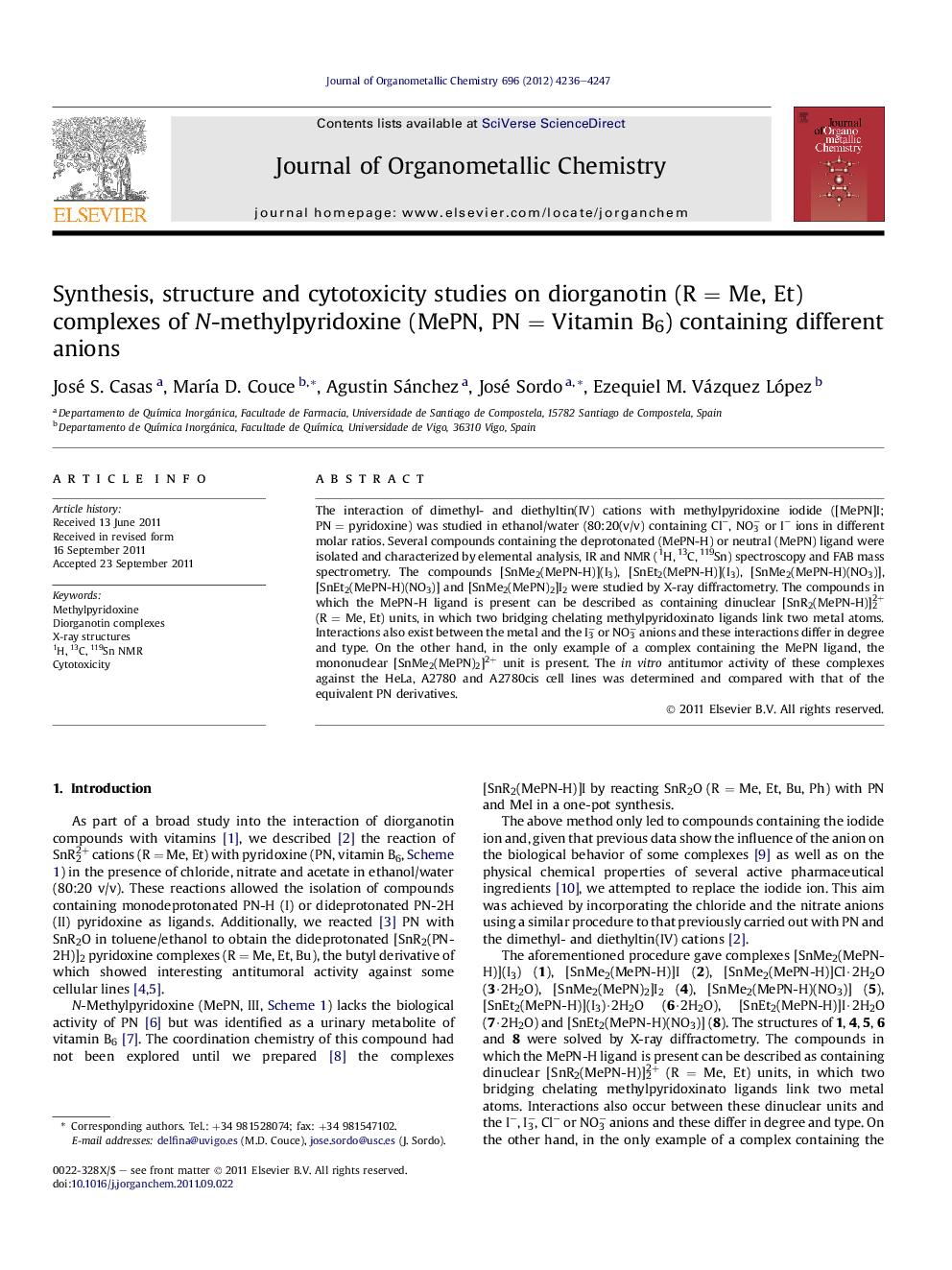| Article ID | Journal | Published Year | Pages | File Type |
|---|---|---|---|---|
| 1326497 | Journal of Organometallic Chemistry | 2012 | 12 Pages |
The interaction of dimethyl- and diethyltin(IV) cations with methylpyridoxine iodide ([MePN]I; PN = pyridoxine) was studied in ethanol/water (80:20(v/v) containing Cl−, NO3− or I− ions in different molar ratios. Several compounds containing the deprotonated (MePN-H) or neutral (MePN) ligand were isolated and characterized by elemental analysis, IR and NMR (1H, 13C, 119Sn) spectroscopy and FAB mass spectrometry. The compounds [SnMe2(MePN-H)](I3), [SnEt2(MePN-H)](I3), [SnMe2(MePN-H)(NO3)], [SnEt2(MePN-H)(NO3)] and [SnMe2(MePN)2]I2 were studied by X-ray diffractometry. The compounds in which the MePN-H ligand is present can be described as containing dinuclear [SnR2(MePN-H)]22+ (R = Me, Et) units, in which two bridging chelating methylpyridoxinato ligands link two metal atoms. Interactions also exist between the metal and the I3− or NO3− anions and these interactions differ in degree and type. On the other hand, in the only example of a complex containing the MePN ligand, the mononuclear [SnMe2(MePN)2]2+ unit is present. The in vitro antitumor activity of these complexes against the HeLa, A2780 and A2780cis cell lines was determined and compared with that of the equivalent PN derivatives.
Graphical abstractA series of diorganotin(IV) compounds containing the deprotonated MePN-H (I, II) or neutral MePN (III) ligand was prepared and structurally characterized. The cytotoxicity of these compounds against several cell lines was determined and compared with that of the equivalent pyridoxine derivatives.Figure optionsDownload full-size imageDownload as PowerPoint slideHighlights► Characterization by spectroscopic methods and X-ray diffractometry. ► Mono- and dinuclear complexes. ► Cytotoxicity studies.
